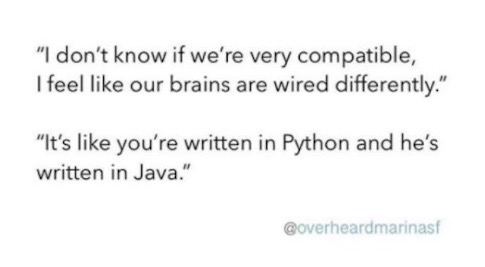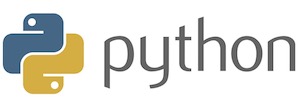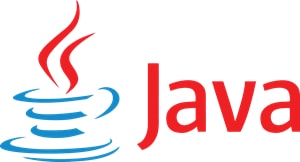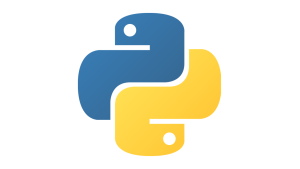Superman vs. Batman. Star Wars vs. Star Trek. Coke vs. Pepsi. The choice between Java vs. Python isn’t really that kind of rivalry—the two languages typically have different use cases and fan bases. In fact, they’re so different that they’ve become a nerdy Instagram metaphor for romantic incompatibility:

But as two of the most popular programming languages around, it’s worth looking at some of their similarities, differences, advantages, disadvantages, and ideal use cases.
First off, despite that Instagram joke, it’s important to remember that Java and Python share important similarities as well as key differences. Both are powerful programming languages, for example, with large, devoted communities and a huge array of libraries supported by legions of developers. If you can’t do something with the native language itself, you can very likely find a library to provide the required support. In fact, no one may truly know the bounds of the library support for either language because no one person could try them all. Obviously, some libraries are more popular than others, and some appear in nearly every application of any consequence at some point.
But Java and Python are also very different from a number of perspectives. Some of these differences are objective and not open to debate, while others are a matter of opinion, usage preference, or programming environment.
 For example, Java is a compiled language and Python is an interpreted language. This difference gives each language particular benefits and drawbacks. Even as arguments rage over whether compiled code is faster to execute than interpreted code, for example, the truth is typically more nuanced. Whether one language is faster than another depends—among other things—on the environment in which they’re used. For example, Python is more adept at running in massively parallel mode on GPUs.
For example, Java is a compiled language and Python is an interpreted language. This difference gives each language particular benefits and drawbacks. Even as arguments rage over whether compiled code is faster to execute than interpreted code, for example, the truth is typically more nuanced. Whether one language is faster than another depends—among other things—on the environment in which they’re used. For example, Python is more adept at running in massively parallel mode on GPUs.
The two languages are also written differently. When creating a structure in Java, you enclose it in braces. Python uses indentation to perform the same tasks. FreeCodeCamp calls Python code “neat, readable, and well structured. Proper indentation is not just for beauty here — it determines code execution.”
These structural differences can affect how programmers view the languages and the speed at which a programmer can type them. Theoretically, they also have an impact on the skill level required to learn the language. In most cases, though, the issue really comes down to a matter of personal preference. More to the point, perhaps, many developers rely on IDEs, coding environments, and templates, which makes the issue far less important.
 Programmers endlessly debate the merits of the two languages in other ways, as well. For example, some people claim that a developer can be five to ten times more productive in Python because Python supports, among other things, dynamic typing. Others have opposing views about the productivity issue. Most of these arguments use different approaches to prove their point, making for not-very-useful apples-to-oranges comparisons. Which language is ultimately more productive typically depends on the developer’s experience with the language, coding style, and application-development requirements.
Programmers endlessly debate the merits of the two languages in other ways, as well. For example, some people claim that a developer can be five to ten times more productive in Python because Python supports, among other things, dynamic typing. Others have opposing views about the productivity issue. Most of these arguments use different approaches to prove their point, making for not-very-useful apples-to-oranges comparisons. Which language is ultimately more productive typically depends on the developer’s experience with the language, coding style, and application-development requirements.
Practically speaking, remember, language tools eventually turn whatever programmers create into machine code. So choosing a language isn’t a matter of which one the machine will like more, but one of meeting a developer’s requirements for clearly conveying a task to the machine in terms that the developer understands.
Trends in Java and Python
While not as trendy as it once was, Java is still the most popular programming language by virtually any measure. On the other hand, Python’s growth has been astronomical, especially in developed, high-income countries. According to some sources, Python will eventually overtake Java’s popularity. The reasons for this amazing growth include developer productivity, language flexibility, library support, community support, and ease of learning. Python has also been heavily leveraged in hot areas like data science and artificial intelligence as well as web applications, desktop apps, network servers, and media tools.
Java’s popularity, meanwhile, may have been hurt by its less-than-stellar security reputation. Tech news sites such as The Register delight in bashing Java, while The Hill claims that 88% of Java apps have security issues. Of course, Java’s bad rap is largely due to problems with the Java browser plug-in, otherwise the language’s security problems are not significantly worse than other languages. In any case, Python’s own security record is far from ideal, but it has enjoyed better support in that area, and Python’s ease of use can make it easier for less-experienced developers to secure their code.
However, it would be unwise to think of Java as a “has been” language. Java developers keep adding new functionality and making Java smaller, faster, and more flexible when it comes to large-scale development. The powerful Java Virtual Machine (JVM) makes it easy to create cross-platform compatible Java applications, and Java continues to excel at building large traditional applications that represent the kind of coding that most businesses engage in today—it’s used by 90% of the Fortune 500! No matter how you cut it, the huge installed base of Java application code—and Java programming jobs—isn’t going away any time soon.
Java and Python also use very different threading models. The Python GIL, or Global Interpreter Lock, means that, unlike Java, Python is effectively single-threaded—it can only run on a single CPU core at a time. On the other hand, using a GPU with Python is relatively simple, compared to doing the same thing with Java. So, while it may not yet be a standard implementation outside of scientific applications, a Python application running in a massively parallel mode on a 5,120-core GPU is likely going to smoke a fully optimized Java application running on an 8-core CPU.
Perhaps due to the wide range of Java-development positions, a recent freeCodeCamp post noted that Python programmers typically make more money than Java developers: $116,000 vs. $102,000 per Indeed and $99,000 vs. $96,000 per StackOverflow.
The “literate programming” issue
The learning curve for a programming language depends a great deal on your current knowledge, intended language use, and learning environment. For example, if you already know how to program in C, C++, or JavaScript, then learning Java can be relatively easy, especially if you just want to write application code. However, if you’ve never programmed before and you intend to use the language to create output for the scientific community, for example, then Python may be a better choice. Python is the current language of choice in schools because it helps people build good coding techniques very quickly, and it has a robust range of uses.
Code presentation is also an increasingly important distinction between the two languages. In the past, developers used code largely to create applications. The code was generally read by other developers—and machines—and for a long time Java’s concise syntax had the edge. However, now that people with differing perspectives and skills use programming languages as they work toward a wide variety of goals (not necessarily application development), you also need to consider their needs and skills. Python may have an edge here because it fully supports the literate programming approach originally conceived of by Stanford computer scientist Donald Knuth.
When working with literate programming techniques, a single document contains code, explanatory prose, graphs, pictures, and all sorts of other material, yet the code remains fully executable within the environment. That allows a presenter or a non-programmer to use the environment in a manner that few developers would recognize as “writing code.”
Literate programming excels in several areas:
- Demonstration
- Collaboration
- Research
- Teaching
- Presentation
Python directly supports such environments through IDEs such as Leo and Jupyter Notebook. You can also add this support to other editors, such as Atom, using special instructions. When working in a similar environment using Java, by contrast, the environment can feel bolted on and the learning curve tends to be higher.
Performance comparison
Some developers believe that “interpreted” always means “slow.” It’s common for Java users to say, “Sure, write it in Python, or whatever you want, but when you need your application to scale, you’ll have to rewrite it in Java."
The problem with comparing the speed of one language to another is that it often comes down to the environment—you can create a test that favors one language over another in a lab setting, but the results that matter are those that you see in the field. In addition, you must consider issues such as the libraries used and the coding style employed in creating the application (at least with Python). That’s because Python supports multiple coding paradigms (more on that later). Comparing Python performance of Python apps written using the functional paradigm vs. the object-oriented paradigm style, the results would likely differ in hard-to-predict ways.
It’s also important to consider how different versions of a language affect performance. In the real world, it’s not always about comparing the most recent versions. On the Java side, most applications are 2-3 versions behind the current version. On the Python side, Python 3.x typically runs faster than 2.x, but only with libraries specifically optimized for Python 3.x. So while it might seem counterproductive, some data science programmers (and others) still choose to use Python 2.x instead of 3.x to take advantage of particular libraries. Note that the Python community has struggled to make the transition from 2x to 3x, and is currently maintaining both forks. Still, as Python 2.x approaches its end of life, you’d need a strong reason to choose Python 2.x for new projects.
Ultimately, performance is a maddeningly complex metric. Which language runs fastest usually comes down to environment—how the code is written, used, and run, not to mention the effects of the libraries and other external contributors.
Market share and community
Comparing the relative popularity of various programming languages is also notoriously difficult. But in most attempts to rank languages by popularity—either here on the New Relic blog or on sites such as Tiobe, Java typically comes in first overall, with Python not far behind, typically placing somewhere in the top five.
Importantly, both languages are supported by large and vibrant user communities. There are Java User Groups (JUGs) all over the world. (This map application lets you drill down to find a JUG near you.) Java programmers can also attend giant, high-profile events, such as JavaOne. The Python community is also strong, with 1,637 Python user groups in 191 cities and 37 countries attracting more than 860,000 members. Python events range from PyLadies meetups where women can meet and code together to PyCon and many others.
Don’t miss: The Most Popular Programming Languages of 2017
Choosing to learn Java or Python (or C, C++, or any other widely used language) is a solid move if your chief goal is developing a marketable skill. Knowing any of these languages will help get you a job. Better still, it’s a good idea to learn several of the most popular options.
Don’t miss: 10 Surprisingly Interesting Ways to Earn a Living Using Java
However, as noted earlier, the true point of a programming language is to serve the needs of a developer in conveying a particular task to the machine in the most straightforward and clear manner possible. For some developers, straightforward translates into the fewest lines of code or the fastest application speed. But the issue goes far beyond either of those considerations. For example, if you’re a data scientist working on a machine-learning project, then Python might be the best choice. (Java comes in third for this group—still quite high.)
Flexibility also matters. When working with Python, you have access to multiple programming paradigms that you can mix and match as needed within a single application. Java supports only one programming paradigm: object-oriented. Interestingly, Python supports multiple programming paradigms in a single application, which means you can use the particular paradigm that best suits a subtask within the application, rather than relying on a single paradigm whether or not it best meets the need.
Don’t miss: Embracing the Four Python Programming Styles
New Relic support
Reinventing the wheel is never fun. It’s also a waste of time, which is why libraries are so popular for both Java and Python. Developers also need other forms of support to ensure applications are up and running as quickly as possible and continue to perform as expected. One way to do this is to use an agent to monitor applications, but writing an agent can be time consuming and error prone. New Relic, of course, has agents for both Java and Python. The Java agent is the most widely used, followed closely by PHP, then Python. We try to make our agents work as consistently as possible, but each language’s agent also reports on specific data that is significant and unique to it.
The New Relic Java Agent, for example, can help you optimize application speed by monitoring things like which classes the JVM is actually loading and unloading. This is critical, since it’s not always easy to interact with a compiled environment compared to an interpreted environment. Of course, New Relic also lets you monitor other Java-environment issues, such as garbage collection. (For more information, see the New Relic Java documentation.)
The New Relic Python Agent, meanwhile, is designed to take full advantage of the Python environment. For example, you use a pip install to implement the New Relic Agent, which is precisely the same approach used for every Python library. The agent works with a wide variety of web frameworks and hosting mechanisms, including Django, Gunicorn, WSGI, CherryPy, uWSGI, and more. You also gain access to all of the essential elements of the Python environment, including server information. See New Relic’s Python documentation for more information.
Multi-lingual FTW
The point is that there is no single best programming language—just ones that most closely meet your needs at any given time, for any given project. Ideally, developers should know several languages so they don’t have to settle for using a language that’s ill suited to particular goals. Knowing more languages makes it easier to adapt to a large number of situations, such as joining an upgrade team for a particular application, even when the language used for the project might not be the one you’d choose when starting from scratch.
In the end, though, it is possible to make some generalizations about programming languages. Python would be my personal choice for data science, AI, and machine learning tasks. On the other hand, when I need to write applications for end users, especially embedded and cross-platform apps, Java is likely going to be at the top of my list. Java is also an outstanding choice for creating server-side code. Whether or not those preferences hold true for you, hopefully this comparison is helpful in making your own choices of programming languages.
Additional Resources
- Here are the best programming languages to learn in 2018—freeCode Camp
- The 2017 Top Programming Languages—IEEE Spectrum
- Is Java still alive in the enterprise?—TechGenix
- Do you prefer Python or Java? Why?—Quora
The views expressed on this blog are those of the author and do not necessarily reflect the views of New Relic. Any solutions offered by the author are environment-specific and not part of the commercial solutions or support offered by New Relic. Please join us exclusively at the Explorers Hub (discuss.newrelic.com) for questions and support related to this blog post. This blog may contain links to content on third-party sites. By providing such links, New Relic does not adopt, guarantee, approve or endorse the information, views or products available on such sites.



